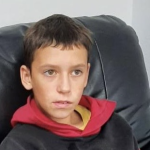Early Start Denver Model for Children with Autism
Autism spectrum disorder is a pathology with a specific set of symptoms that leads to a moderate or severe disability over time. Difficulties in interacting with people, estrangement, insularity, repetitive forms of behaviour, and delayed motor and intellectual development are among the main symptoms of the disease.
The Early Start Denver Model (EDSM) for autism is a complex strategy designed for autistic children at the age of 1 to 5 years. Relatively recently, it was developed by U.S. psychologists D. Dawson and J. Rogers. Today, the method is actively used in many countries with developed medical systems.
The Denver Model for ASD develops everyday skills for various purposes:
- Emotional and verbal communication
- Social interaction
- Gross and fine motor skills
- Game activity
- Adaptive behaviour
It also teaches a child the ability to learn from their own life experiences and stimulates the spontaneous subconscious tendency of a child to make contact, imitate, repeat, and take initiative. It is important that the learning strategy be built individually for each child on the basis of personal preferences, interests, and natural abilities.
What do scientists, doctors, and educators think about the Denver Model for autism?
The method is considered experimentally confirmed but relatively new in ASD correction protocols. It resembles ABA therapy in structure and substantiation but also includes interactive elements of many other methods. It makes teaching an autistic child more natural and easy.
This feature is practically realised when a specialist who interacts with an autist establishes contact in a playful way and teaches and adapts to the child. The learning process allows for the formation of more than twenty skills that will be useful in a child’s future life.
The effectiveness of the Early Start Denver Model for children with autism
It was confirmed by various clinical experiments. Preschoolers of all ages demonstrated visible improvements in behaviour and learning. Significant inhibition of the further development of autism was diagnosed in most cases. Their mental abilities were better than those of children with ASD who underwent other programmes of educational or psychological assistance.
It is noteworthy that the model can be used at home, in a preschool, or in a clinic. Only specialists who have studied the technology of implementing this method can work with children. Also, they can train a child’s parents and make recommendations on the use of certain elements at home.
The modern approach to the early treatment of childhood autism is the use of minimally invasive stem cell transplantation to strengthen conservative methods.
Cell transplantation at the Mardaleishvili Medical Centre is the #1 method in protocols for fighting ASD.
- It has the advantage of eliminating abnormalities in the structure of the brain that may cause ASD development
- It requires the use of stem cells from bone marrow or umbilical cord blood
- The result of treatment for childhood autism spectrum disorder is the elimination of many symptoms
The stem cell transplantation procedure is an excellent basis for the further development of an autistic child to master the school curriculum and deep socialisation.
You and your child are welcomed in Georgia for the correction of childhood autism. Choose a convenient date online and find out the details of the procedure from the clinic’s doctor.
Autism Treatment Center Videos
Autism treatment with own stem cells
Cord blood association congress
International Quality Crown
Autism Treatment Reviews
Autism treatment with own stem cells
The story of Alessandro (6 years old)
Autism Patient Testimonial - Stem Cell Treatment
Clients Testimonials

Review by Anastasia, mother of Yusup (8 years old) Read More

Feedback from Nathalie, mother of Andre (9 years old) Read More

Feedback from Yulia, mother of Emily (7 years old) Read More

Feedback by Everita, Katrina’s mother (5 years old) Read More

Feedback from Igor, David’s father (12 years old) Read More












